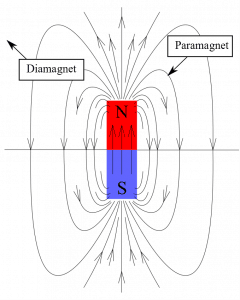Christmas is around the corner and everyone is thinking about presents and decorations (unless you still have finals to pass..). Traditional glass ornaments and laces are adorable; however, if you’re bored with this stuff (or simply don’t have any at the dorm), you can create decorations for college in modern way, using almost everything, the only limitation is your imagination. Some science lovers cannot go without science even on holidays and thus yield sometimes strange, or even crazy ideas and hand-made implementations. We don’t recommend you to construct the foregoing stuff at home, as without understanding of physics and proper safety arrangements this could turn into troubles. If you are not a physics lover, proceed to other ideas for Christmas trees in this article. So look! Continue reading
Physics - Page 3
What is the most precise clock in the world?
We cannot imagine a life of a common individual without such a wise device as clock. Yes, you can object, that not everyone wears watches these days. Yet everyone owns mobile or smartphone, and one surely has a clock! In fact, the need in time measurement appeared ages ago. Naturally, the question arises: what’s the most precise clock? To answer this, at first we need to understand what it means to measure. In fact, we simply compare one quantity to another, which is called the unit of measurement. The standard measures of time are likely to be based on constant periodical processes of high accuracy. Continue reading
Run or Walk in the rain? How do you stay drier?
Imagine you walk down the street without an umbrella and suddenly the rain starts. You are empty-handed and don’t have a raincoat while the rain intensifies. What are you supposed to do? What’s the best strategy – to run, to walk, or standing in the rain gives the same result and there’s no need to hurry?
Majority of people immediately answer: RUN! Find the closest shed as quick as possible. The simple truth it seems to be. However, some will venture to disagree saying that there’s no need to run as they would catch more raindrops than during a simple walk. Continue reading
Why the water is blue?
Have you ever asked yourself a question – why the water is blue? Obviously,we mean something large like sea or the ocean. If you take a glass of water, the liquid seems transparent and colorless, yet vast amounts of water possess certain colors. Let’s try to understand why it happens.
The color of the ocean is defined by the mechanism of absorption and dissipation of light by water molecules. Geoscientist Vasily V. Shuleikin described this complicated mechanism only in 1923. It turned out that water molecules move oscillatory, thus, they absorb waves of different length. Red wavelengths are predominantly absorbed, blue are less. Water molecules scatter blue wavelengths by absorbing the light waves and reemit those waves in different directions into the air, while red wavelengths are “swallowed” by the ocean. This makes ocean seem blue, and this is exactly why underwater photos are so full of blueness. Continue reading
How to comb a hairy ball
 Have you ever tried to comb a hairy ball? Really, it is a very important and responsible work. It roots back to old 1912. A Holland mathematician Luitzen Brouwer, who worked in a field of topology and set theory, had shown that hairy ball cannot be brushed in such a way to be smooth and without intersections of hairsprings. At least one hairspring should stick up. This result is now called a hairy ball theorem. Continue reading
Have you ever tried to comb a hairy ball? Really, it is a very important and responsible work. It roots back to old 1912. A Holland mathematician Luitzen Brouwer, who worked in a field of topology and set theory, had shown that hairy ball cannot be brushed in such a way to be smooth and without intersections of hairsprings. At least one hairspring should stick up. This result is now called a hairy ball theorem. Continue reading
Why gold foil is on space objects?
You could notice that many NASA photographs of spacecraft often feature items wrapped in golden foil. Obviously, it is used for insulation. But why NASA uses gold? And how does it work? As it is known, in space there is solar radiation, which affects the Earth’s atmosphere and is the main source of energy for all the processes in nature. Continue reading
What happens when you hit a magnet with a hammer?

You may haven’t known that but all materials in the world reveal some magnetic properties, so one can classify any media by the behavior in the external magnetic field.
Here you can see a typical scheme of the field created by a permanent rod-shaped magnet. Black lines (called magnetic force lines) show the direction of the field in space. The density of lines represents the strength of the field. The denser the lines – the stronger the field. By agreement the direction of the magnetic field outside magnet is chosen to be from the north pole to the south pole. To be honest poles are just a way of saying that a field has a certain direction, in fact there are no poles of course.







